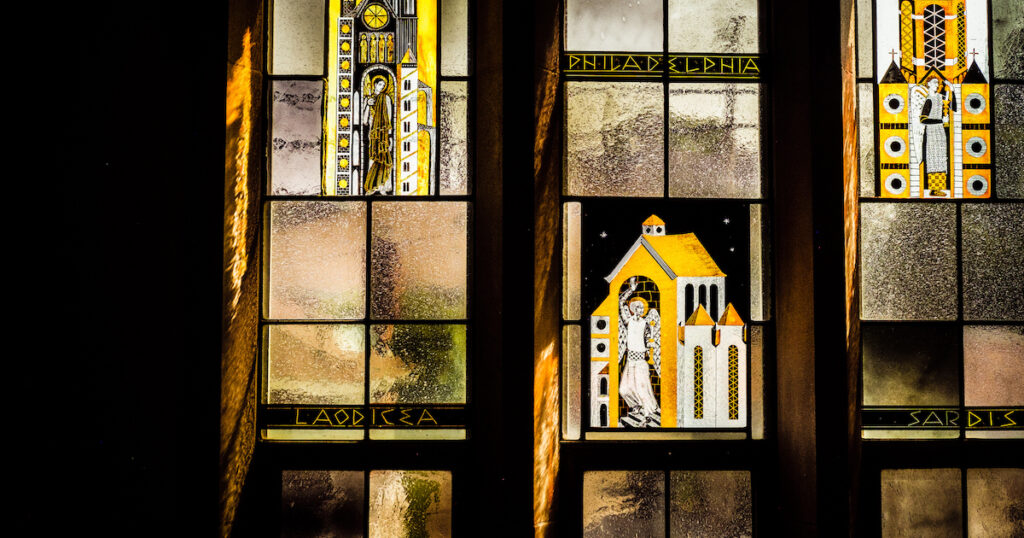Editor’s note: This is the second article in a series.
Two decades ago, a widely respected and influential academic named Richard Rorty (1931–2007) explained how he and other like-minded professors understood the responsibilities of their university professions. Yes, they had to teach the content of their courses. Indeed, they hoped to foster critical thinking amidst their students. However, they also believed they were obliged to change the worldview of their students. This meant the dismantling of traditional values and religious beliefs.
Why? Traditional values and beliefs got in the way of secular ideals like social justice, now often referred to as inclusion and equity. In a piece entitled “Universality and Truth,” Rorty admitted that he and his peers used techniques that could be described as propaganda to undermine traditional authorities, specifically naming parents and Scripture. He even acknowledged the intolerance he, and professors like him, had for religion and tradition. They had no tolerance for views they regarded as intolerant — views like what the Bible regards as sinful sexual behavior, the nature of marriage and so on. “We are not so inclusivist,” he wrote to people presumably like you and me, “as to tolerate intolerance such as yours.”[1]
Though Rorty died before “wokeness” spread into the broader culture, he and a host of other academics advocated for its values. Woke values have since spilled out of universities and colleges and now exert tremendous influence in the public arena. However, they are not merely an expression of politics; they cannot be ignored by simply consigning them to the kingdom of the left hand. Woke values are the expression of a worldview that is fundamentally at odds with a biblical worldview. Before we can critique the woke worldview, we need to understand what a worldview is and what animates the woke worldview.
Woke worldviews
A worldview is a distinct way of looking at and interpreting the world. It consists of numerous presuppositions — assumptions about the nature of reality, how we know what is true, what is good and so on. These assumptions are learned consciously and subconsciously, and we often believe them without much thought about how they stand up to careful examination. The new, so-called “great awokening” is a relatively new worldview, and it has evolved so much over the last few years that it is hard to understand it just by observing its manifestations in popular culture.
Many volumes have been written on the topic, and these writings inform the popular expression of this worldview. Most of the literature can be found in a genre of academic literature known as critical social justice theory. In fact, the two — wokeness and critical social justice theory — are essentially identical. “Woke” is simply a slang term for the popularization of the latter. It has other names too — cultural Marxism, applied postmodernism, radical progressivism — but critical social justice theory is the most prevalent. Some discernable patterns of thinking emerge from the literature that can help us make sense of the woke worldview. These patterns include a discontent with the world, a reduction of history to narratives of oppression, the confusion of equity and inequality, and an utopian vision of the future.
The first pattern is the ubiquitous presence of discontent, disdain and sometimes outrage for the status quo. This is often coupled with a simplistic explanation of the world’s problems. Where Karl Marx reduced all human history to a class (that is to say, economic) conflict, critical social justice theory roots the conflict in something else: oppressors and the oppressed. The assumption that societies are collections of individuals who compromise and cooperate (for better and for worse) toward some recognized common good is merely a story we tell to preserve the status quo and mask oppression. Instead, the woke view human history, especially the American story, as a story about oppressors oppressing the oppressed. It is a story about white people amassing power and privilege on the backs of its black victims. Or at least that’s the rhetoric of subdisciplines of critical social justice theory like critical race theory.
Woke identity
The reduction of history to narratives of oppression is based upon a second assumption: That all individuals are intrinsically connected to identity groups. These groups are distinguished by characteristics like skin color, sex and gender, sexuality and physical abilities. The woke worldview presumes that these groups are always serving or privileging their own interests and thus the one in the majority will necessarily work against, disadvantage and oppress the others. And even if the majority creates institutions and constructs systems that establish order, preserve liberty and guarantee equality under the law, they nevertheless perpetuate oppression. They remain unaware of their oppression, having been lulled to sleep by a false narrative of America being a place of liberty and justice for all. The woke movement seeks to wake people up, to persuade and perhaps coerce them into believing that oppression is the lasting legacy of America.
The New York Times Magazine’s1619 Project is one recent high-profile example of this. The project began in 2019 and has been featured across mainstream media and advertised at the Super Bowl. Its director, journalist Nikole Hannah-Jones, received a Pulitzer Prize for directing the project. Despite widespread criticism for numerous historical errors, her commentary and the worldview the project promotes continues unabated. It’s now available as a six-part documentary. Hannah-Jones also boasts that it has reshaped historical curricula across the nation.
The 1619 Project sought to revise our understanding of America’s founding. Its revision is nothing short of radical and, as both liberal and conservative historians unanimously point out, ideological (that is, it serves a social and political purpose). Hannah-Jones claims that the project was intended to reframe American history by deconstructing well-established narratives of its founding. America was not established in 1776, she argues, but in 1619 when slaves were first brought to the North American colonies. America, in this view, was founded not as a democracy but a slaveocracy. The founders did not seek political freedom but, instead, the freedom to own slaves. Thus, white slave owners and their accomplices baked oppression of blacks by whites into the American legal and political system. Despite the great advances from the Civil War to Civil Rights, America’s systemically white supremacist culture perpetuates the oppression of blacks, albeit unconsciously.
The only way for any sort of reconciliation is a radical transformation of society, argues woke superstar Ibram X. Kendi. In How to Be an Antiracist, he argues that for individuals or groups (such as a church body) to not be racist is not enough. In fact, striving to be “not racist” or neutral in the supposed culture war over race today is in fact a “mask for racism.” You must be antiracist, meaning you must be actively pursue racial equity.
Racial equity does not mean equality under the law or equal rights or even equal opportunity. It means equal distribution of wealth and other resources that, in a free society, would be obtained by merit. It requires something like a command economy, and it would certainly entail injustice being done to some for the sake of “justice” for others. Here’s how he puts it: “The only remedy to racist discrimination is antiracist discrimination. The only remedy to past discrimination is present discrimination. The only remedy to present discrimination is future discrimination.”[2] Individuals and groups that do not voluntarily join the cause are deemed racist regardless of how they think or behave. They are guilty because they have not embraced the right worldview and failed to align with the right type of politics.
Woke inequalities
To be woke is much more than a perspective on how one should make sense of the disparities between black and white populations in the United States though. As a third point about its most basic commitments, it is concerned with all inequalities, especially those that result from the normalization of a particular standard. For example, the enduring standard of heterosexuality (called heteronormativity) has led to the marginalization of other “sexualities,” such as bisexuality and homosexuality. Those who participate in these respective sexual activities have necessarily been discriminated against since they are seen as practicing deviant behavior. This isn’t just discrimination; it is oppression, the woke argument goes.
Woke advocates prefer “oppression” because it captures the political nature of their argument. Words like discrimination don’t quite show how a culture’s standards marginalize and disempower those who don’t fit. This politicizes the worldview. It gives it a cause for which to struggle. This is why critical social justice theory, which has been around for decades, has only recently come to our attention: It is no longer just a collection of theoretical proposals of activist academics. It now animates the woke movement as it pursues its primary objective — social equity.
Like racial equity, social equity differs from fair and equal treatment. In its most radical form, it envisions a society that is tolerant and inclusive of every manner of living. Rather than society and its traditional values regarded as the standard by which competing values are evaluated, critical social justice theory rejects such standards and distinctions as leading to inequality. Some of the standards include the traditional nuclear family being the standard against which other domestic arrangements are judged, heterosexuality viewed as a natural expression of sexuality, belief that biological males are men and biological women are women and so on. These hierarchies order society into categories of good and bad, desirable and reprehensible, accepted and shunned. Critical social justice theory rejects such hierarchies for the sake of social equity.
Woke utopia
The woke view of inclusion and equity — and the way words like inclusion and equity are understood by one who is woke — means something totally different. It seeks the radical normalization of any behavior and the flattening of all hierarchies to make all things equal. And in making all things equal, it seeks to make all things new, that is, to remake the world. This a fourth assumption of wokeism: It is, in a way, utopian. It is committed to creating a world that has never existed and cannot exist this side of paradise.
Despite its abrupt appearance in Western societies less than a decade ago, wokeism actually has deep historical roots in universities, among intellectuals and within particular philosophical traditions. The next article will look at its roots so that we might gain a broader understanding of the so-called great awokening and to help us critique it more effectively.
[1] Richard Rorty, “Universality and Truth,” in Robert B. Brandom, ed., Rorty and His Critics (Oxford: Blackwell Publishing Ltd., 2000),22.
[2] Ibram X. Kendi, How to Be an Antiracist (New York: One World, 2019), 19.
Photo: Getty Images






The beginnings of this series bode ill for the editorial reputation of the Witness. While one could see the first two articles as a hamfisted attempt at satire that with some polish might better be deployed in the Babylon Bee or The Onion with the title “Lutherans Hyperventilate over Academic Wokeness”, that was not the author’s intent. Indeed, he did a better job at assembling a perfect example for future rhetoric classes of a large collection of critical thinking errors, most particularly logical fallacies and cognitive biases. It would take more than is allowed in “Comments” to address them. All I note is that the continued focus in evangelical Christianity on the sole role of individual and not societal sins in questions of race, gender and sex blind its adherents to the longstanding institutional and legal bases of discrimination. I also note that credible analyses of polls demonstrate that there is a linear, positive correlation between frequent church attendance and racist attitudes. Until we can analyze and address these issues, we will fail to understand the depths of hurt and pain among many of our fellow citizens as well as parishioners and disciples. Until we as institutional Christianity can finally come to grips with the differences between the results of the secular liberation of minorities (women, racial groups, and gays) and our theologies, we will continue to experience a constant out migration of many of our young people into “None” categories. Calling names and writing a cartoon-like “analysis” of opponents is going backwards, not forwards.
Very well said. Long winded rants against woke boogie men only stoke fear and anger and sometimes violence against anyone with a different life experience or point of view. The demise of organized traditional religious denominations traces directly to the abandonment of scripture for politics, trying to take God’s place or “do His work” rather than doing His will.
Your letter “From the Editor ” in the April issue states that 5 remaining articles would be posted online “this month and next.” You also reference tagging articles after someone’s query after the second article appeared online. Apparently the remaining four articles are not yet available online.
Please include direct link to part 1? 🤔
We’re putting together a series tag that will tie them all together. Stay tuned.
RSA
Click on “Adam S. Francisco” in the blue byline at the top, and you’ll see his previous article.